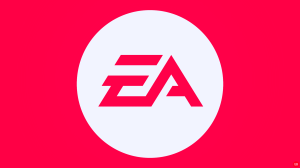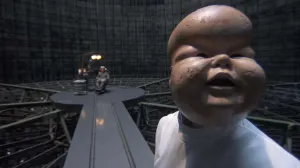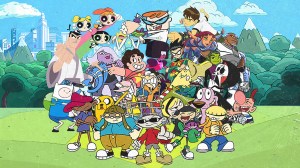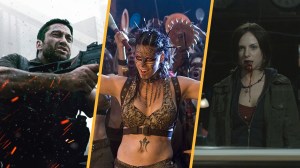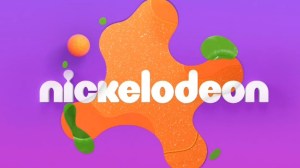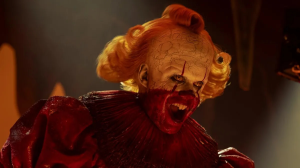As the year winds to a close, everyone’s doing Best-Of lists — and we’ll get to that — but it seemed like one of the things that doesn’t get enough attention is the books that are most improved year over year.
Videos by ComicBook.com
In comics, things are a little different than film or even TV. There are certain titles which, year in and year out, will continue to exist more or less no matter what. Being of poor quality is no guarantee of cancellation, because the comic has been going on for a great many years before a “bad” creative team comes on board and will outlive them by a great many more.

It’s also an industry where many books live on the razor’s edge, and a great creative team or a unique and interesting approach doesn’t necessarily guarantee long-term viability.
With the Rebirth line-wide reshuffling happening about halfway through the year, most fans and criitcs would agree that DC Comics took a sharp turn in the right direction…but many of the best-reviewed and best-selling comics (Batman, Harley Quinn, and Aquaman, for instance) have been the best-reviewed and best-selling titles for a while now. That isn’t to say those books don’t deserve a place on the list…but this isn’t that list.
Here, instead, we’ll try to look at the books and properties that are in a better place now than they were a year ago, and better positioned for a kick-ass 2017.
So…did your favorite book or character make our list? If not, make your case in the comments below!
SUPERMAN
Superman: Lois and Clark was the best the Man of Steel had been in years — and the company followed up that seemingly one-off miniseries by Dan Jurgens and Lee Weeks with an ongoing title: Action Comics.
Following a bumpy five or so years during which time the titles never really found any kind of long-term stability or sales success, the Superman titles welcomed writer Peter Tomasi for his “Super League” story arc, which would bridge the gap between The New 52/DC You era and the company’s Rebirth initiative.

But “Super League” was a ruse, and instead we got “The Final Days of Superman” and the death of the New 52 Superman, leaving the role of Superman to his pre-Flashpoint counterpart, who had made his way to Earth alongside his wife Lois Lane and their son Jonathan following the events of the Convergence crisis.
DC publisher Dan DiDio has said in the past that if Superman is successful, DC will be successful…and from 2011 until the middle of 2016, Superman as a property was generally not sucessful. Some good stories were told during that time and some really interesting territory explored…but moe than any other character, Superman benefited from the restoration of a sense of wonder and nobility that has been missing from the paranoid and grounded DC Universe of the post-Flashpoint era.
Since Tomasi took over, Superman has been one of DC’s best and most successful books, while Action Comics has explored the world around the Man of Steel in exciting ways and provided readers with a classic take on the hero that has been largely missing in the recent past.
BLUE BEETLE

One of a few characters on this list who simply hadn’t had a title in a while (or even appeared much) in the run-up to DC Universe: Rebirth, Jaime Reyes got exactly the status quo so many fans had wanted for him in the ten years since he first appeared: to be a young superhero with a strong support network, close family ties…and Ted Kord alive, well, and training him in the ways of superheroics.
Keith Giffen writing the character feels like home, even if the group dynamics that made it special were clearly influenced by Leverage writer/producer John Rogers’s contributions to the original series that made fans fall in love with Jaime and his El Paso circle.
Even so, while the New 52 take on Jaime’s Blue Beetle was entertaining enough, it lacked the sense of history that made Jaime who he was in the months and years following his introducing in Infinite Crisis. Without that, he was largely just another teen hero. With at least some of that history restored, he’s finding his own identity again.
DEATHSTROKE

Deathstroke is a difficult character to get exactly right: he’s a mean bastard, and if you make him too sympathetic in the interest of making him relatable in his own book, you take away some of what makes him intimidating and ultimately special in other books, where he’s the villain rather than the (anti-)hero.
Following The New 52 relaunch, the criminally-underrated Kyle Higgins did a great job for one arc, followed by a series of disappointing stories that led to the Deathstroke title being one of a few that was cancelled and quickly relaunched post-Flashpoint.
Even the relaunched version didn’t do much better to capture the spirit of the character, but with Rebirth they hit paydirt.
Christopher Priest came out of his semi-retirement to write Deathstroke, and it’s exactly as good as you would think. So far, Deathstroke has been, as much as anything else, an examination of how a bad man becomes so damaged that becoming Deathstroke seems like an option…which is exactly what you need if you’re going to try and make him “relatable” without emasculating him.
TITANS
As a franchise, things were kind of weird for the Titans brand under the New 52. The history of the original Titans, whose adventures in Marv Wolfman and George Perez’s The New Teen Titans are generally regarded as far and away the best in the franchise’s history, had been wiped out by the Flashpoint timeline’s temporal wave…but nobody seemed to agree on what had happened to the sidekicks who grew up to be young adults in a world where legacy and history were largely missing.

The result was an often confusing Teen Titans series, which starred a group of mischaracterized heroes and didn’t acknowledge the existence of pre-Flashpoint Titans at all…and the first generation of sidekicks were largely absent or, when present, may or may not (but probably didn’t) have any kind of team or even relationship before Tim Drake brought togehter the Teen Titans.
History and legacy restored by Rebirth, WALLY FREAKING WEST (you know, the guy who was The Flash when most of us writing for this site grew up?) has rejoined the recently re-assembled Titans (Donna Troy, Dick Grayson, Roy Harper, etc.), and the group knows that there’s something wrong with the timeline.
Meanwhile, over in Teen Titans, a great fill-in arc rounded out the New 52 era and convinced us that maybe Tony Bedard should have just had the gig all along…until Green Arrow writer Benjamin Percy came in guns blazing and showed everyone that he’s got a solid vision for the team’s future.
SUPERGIRL
Supergirl is an interesting book for DC right now.
Of all the various comics which have TV and movie properties around them, it seems as though Steve Orlando’s Supergirl is the most influenced by outside media. It’s also easily the most-improved and arguably the best of those books.

This time last year, there was no Supergirl comic, as it had concluded in March of 2015. That ended an uneven and sometimes controversial run for The New 52’s Supergirl, which had started out strong but quickly lost its sense of direction. Along the way, Supergirl was depicted as sullen, angry, and sometimes petulant.
That threw some people, who had always thought of Supergirl — and, really, the Superman family of characters on the whole — as the sunnier alternative to the dark and violent Batman family, but it was an understandable enough progression from the “I’m more powerful than Superman and I’m mad” version introduced during Jeph Loeb’s Superman/Batman run.
Either way, it wasn’t really connecting to readers, and when the TV show came along and gave an idealized version of Supergirl who brought joy and levity to her series, suddenly the existing Supergirl of the post-Flashpoint DC Universe (a Red Lantern? Really?!) felt even more out of sync.
Comic book readers aren’t quite as open to straight-up optimism as TV audiences sometimes are, but Orlando, Brian Ching, and the rest of the team have found a sweet spot that allows the character and her world to be fun without being naive, uses familiar iconography from the TV show without falling back on it to the comic’s detriment, and downplays unnecessary elements of the past without retconning them altogether.
RED HOOD AND THE OUTLAWS

While Scott Lobdell has been writing some version of Red Hood and the Outlaws pretty much nonstop since The New 52 launch in 2011 (two volumes, interrupted briefly by Red Hood and Arsenal), it’s been a bumpy ride.
While he has successfully converted the popularity of the Arkham games and the niche appeal of Jason Todd into a thriving book for DC, it’s never completely broken through to “hit” status and has been periodically set back by scathing critiques of Lobdell’s approach to sexuality, characterization, and the comic’s overall quality.
That seems to have all faded into the background with Red Hood and the Outlaws‘ Rebirth return; the cynical humor of previous efforts has shifted somewhat to a kind of situational humor that works really well for the chracters chosen, and while centering on the divisive Todd might have seemed like an odd idea at first, it makes perfect sense with both Lobdell’s recent history as a writer and the new approach to the title — that it’s a dark reflection of DC’s “trinity” of Superman, Batman, and Wonder Woman.
WONDER WOMAN
Wonder Woman has been a bit of a baffling comic since the launch of The New 52. While the run by Brian Azzarello and Cliff Chiang started strong and remained a fan-favorite to a segment of the audience, it was a bit of an acquired taste and, perhaps just as frustrating for DC, didn’t appeal as strongly to women as it did to men, which was not only a little off-brand for Wonder Woman but a change of pace after the workds of Jodi Picoult, Gail Simone, and the like pre-reboot.

After that run, the book was handed over to Meredith Finch, writer and wife to David Finch, the superstar artist who would draw the book for her. The consensus seems to be that the pair had some good ideas but the execution was lacking — and in any case, it never got the kind of traction with fans or the press that Azzarello and Chiang did.
For Rebirth, DC turned to not only an all-star team-up of writer and artists, but to a central player in Greg Rucka who had already proven himself as one of the best-loved and best-selling Wonder Woman artists in recent memory.
They’ve also taken the twice-monthly format of most of the Rebirth line to their advantage, with each of two famed artists (Liam Sharp and Nicola Scott) drawing one of two stories, each of which ships monthly. In Scott’s, they gave a definitive origin to the current Wonder Woman which blended elements of the pre- and post-Flashpoint timelines. In the present day, Liam Sharp’s story deals with Wonder Woman learning some important things about herself after discovering that she’s been lied to by…basically everyone…for years.

